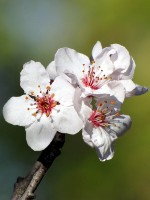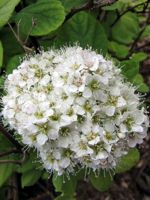Mon-Fri 9am - 5pm Mountain time
Western Sand Cherry vs Birch Leaf Spirea
Prunus pumila var besseyi
Spiraea betulifolia
NOT AVAILABLE THIS SEASON - MIGHT RETURN
NOT AVAILABLE THIS SEASON - MIGHT RETURN
Western Sand Cherry is known for its unique, leathery grey-green foliage and beautiful white blossoms. It is a popular ornamental shrub in parks and front yards. Both you and the wildlife will love its edible small dark red to purple cherries.
Due to its small stature and spreading qualities, Western Sandcherry is suitable as an underplanting or groundcover.
Many people graft plum and cherry varieties to Western Sand Cherry and use it as rootstock. It is also popular to graft hardy apricots to.
Birch Leaf Meadowsweet is a small, rounded shrub, reaching 3 to 4 feet high.
In the early summer, white flowers emerge with dark green foliage. Come fall, birch-like leaves turn a kaleidoscope of red, orange, and purple adding seasonal interest.
Native to Japan and Eastern Asia, this dwarf shrub attracts butterflies and is an excellent option for the front row of a shrub border.

